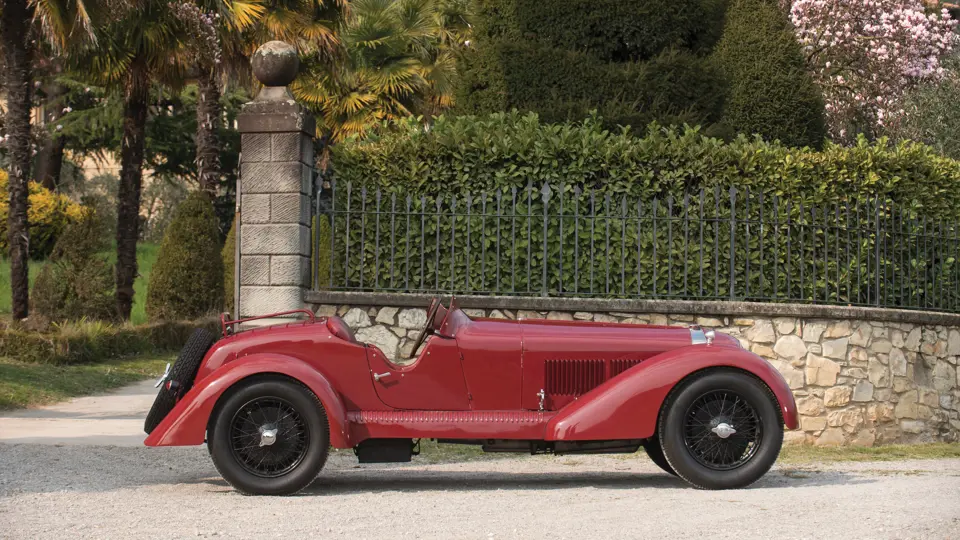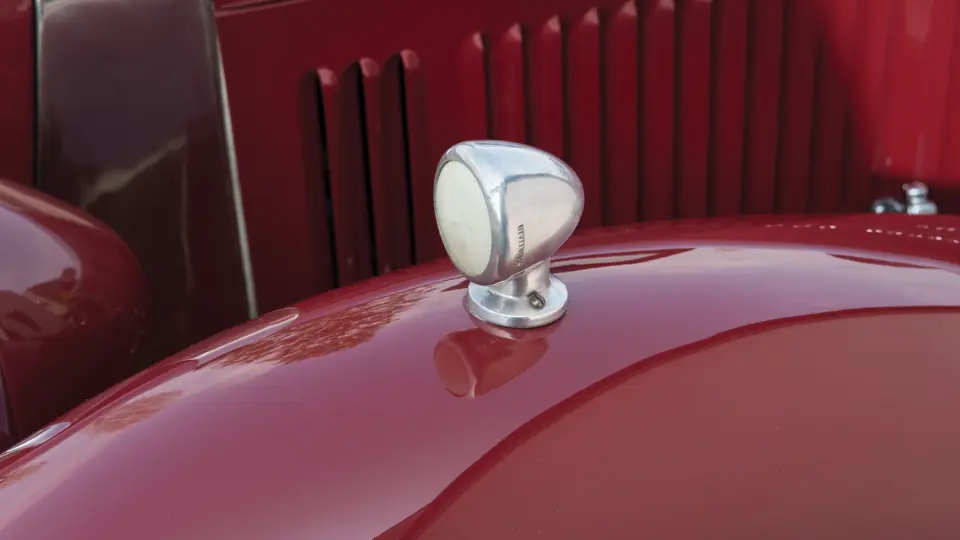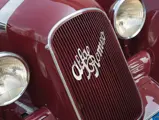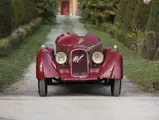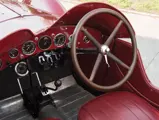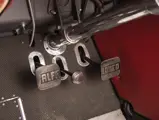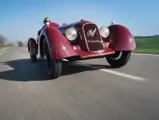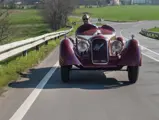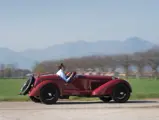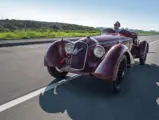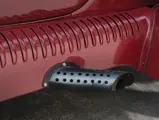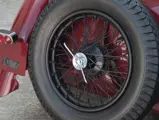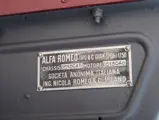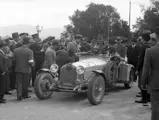
1930 Alfa Romeo 6C 1750 Gran Sport Spider
{{lr.item.text}}
€900,000 - €1,200,000 EUR | Not Sold
The Count Agusta Collection
{{bidding.lot.reserveStatusFormatted}}
- Offered from the Count Agusta Collection
- Three-time Mille Miglia participant: 1931, 1933, and 1936
- Modified in-period to run on alternative fuel, gasogeno
- Converted back to Gran Sport specification
- A unique and fascinating piece of history
85 bhp 1,752 cc DOHC supercharged inline six-cylinder engine, four-speed manual transmission, front and rear live axle suspension with leaf springs, and four-wheel mechanical drum brakes. Wheelbase: 2,745 mm
As the world of motorsports evolved during the early 1920s, FIAT continued to dominate Grand Prix racing; however, it soon watched many of its brightest and most talented employees become hired away by the competition. Perhaps no loss was more significant than that of engineer Vittorio Jano, who not only demonstrated a mastery of technical design, but also supervised field testing, contributed to race strategies, and even occasionally worked with pit crews. It was a coup de grâce for Alfa Romeo, whose team manager, Enzo Ferrari, had personally recruited the young engineer.
Jano was immediately charged with developing Alfa’s new Grand Prix car, the P2, and the model’s smashing run of victories overwhelmingly justified his hiring. In 1926, Jano set to work on a touring car that was centred around the brand-new overhead-cam, 1.5-litre, inline six-cylinder engine. The 6C 1500 officially entered production in 1927, and the Sport version, which became available a year later, featured a twin overhead cam that raised power by 10 to a brisk 54 horsepower. In 1929, the 6C 1500 Super Sport was introduced, and it featured two-seat spider coachwork and an optional Roots supercharger, which increased power to 76 horsepower. These cars were produced in very small numbers during the two series of 6C 1500 production, which lasted until late 1929, when the engine displacement was enlarged to 1,752 cubic centimetres.
The resulting 6C 1750 was produced in four more series of gradual improvements over the following six years, soon distinguishing itself as one of Alfa Romeo’s most important models. While nearly 2,600 examples were made in total, many of these cars were equipped as the single-cam Turismo version (the replacement for the Normale). A minority of these cars were classified as Sport models, which were built on 114-inch chassis and equipped with the twin-cam 1750 engine. Most of these cars were clothed with Alfa saloon coachwork and were soon more appropriately renamed Gran Turismo. This distinction paved the way for the Super Sport examples, which rode the shorter 108-inch wheelbase and were available with finned alloy superchargers and intake manifolds.
In 1930, the Super Sport name was updated to Gran Sport, and these cars featured an ingenious sloping radiator that not only gave the car a more rakish appearance, but also functionally increased the surface area of the radiator for improved cooling. The 6C 1750 Gran Sport Standard was equipped with the Roots supercharger, which developed an unprecedented 85 horsepower, and approximately 106 examples were produced before the introduction of the sixth and final series of cars in 1933.
In factory competition form, the 6C 1750 firmly thrust Alfa Romeo into the winner’s circle, making it arguably more successful than any Alfa model to date. With five major victories in 1929 alone, including Giuseppe Campari’s triumph at the Mille Miglia, the 6C 1750 took the top three places at the 1930 Tourist Trophy and the 1930 Mille Miglia, the latter of which constituted an epic duel between legendary drivers Achille Varzi and Tazio Nuvolari.
PROFESSOR FERRAGUTI AND THE MILLE MIGLIA
While Alfa Romeo was competing at the top of its game, one such 6C 1750 Gran Sport was slated to run a much different race.
Chassis number 8513048 was sold to the Ministry of Agriculture in Rome in 1930. Professor Mario Ferraguti, Director of the Istituo di Frutticultura at Grottaferrata, with co-driver Femminini at his side, first ran this Gran Sport in the Mille Miglia of 1931 in standard form, though they failed to finish.
At the height of the Great Depression across Europe, still reeling from the effects of the First World War, material goods were at a premium. As such, it was often impossible for most private citizens to readily purchase gasoline. In fact, records of the time show a marked change from the use of benzina to other fuels that were not so strictly rationed. Thus, this Alfa Romeo was subsequently modified over the ensuing years to run on fuel, supplied by an apparatus known as gasogeno.
The basic process involves cooking coal or wood to generate a carbon-based gas mixture in great enough concentration to serve as an effective fuel. While gasogeno was not as energy efficient, it was proposed to serve as an alternative to the overly expensive or simply unavailable fuel source. The gasogeno conversion was also not particularly suitable for competition, as an effective conversion unit was quite large, resulting in them usually being incorporated into a large “blister” at the rear of the car or sometimes towed behind as a trailer—neither conducive to motorsport success.
In 1933, the Societa Autogasogeni Ferraguti, Roma, again entered the now gasogeno-powered Alfa Romeo Gran Sport as a demonstration vehicle in the Mille Miglia. Professor Ferraguti piloted the Alfa along with his co-driver Augusto Agostini, a General of the Forestry Militia. They averaged 31.68 mph across the 1,000 miles, finishing well beyond the time limit required of ordinary entrants. Compare this to Tazio Nuvolari, who drove the winning Alfa Romeo 8C 2300 at an average speed of 67.85 mph! With its modest power, the Alfa is said to have taken three attempts to ascend one of the hills between Perugia and Gubbio. Regardless, it must certainly have been considered a success to have even finished the gruelling 1,000-mile challenge.
The 1936 Mille Miglia was complicated by deteriorating international conditions. Race organizers set up special classes for cars powered by alternative fuels, including (but not limited to) gasogeno. That, year a total of six gasogeno-powered cars entered: four Fiats, an Itala, and again the Ferraguti Alfa, this time with co-driver Vacchini. Unfortunately, they did not finish the race; of the six alternatively powered cars, only one of the Fiats completed the 1,000-mile journey, again reflecting modest performance with an average speed of 31.06 mph.
THE CAR TODAY
Offered today from the renowned Count Agusta Collection, the car has similar cues to an 8C 2300 that Professor Ferraguti was working on for the 1936 Mille Miglia, but which was laid up that year with supercharger problems. While it is unknown when the current body style was fitted to this unique 6C, it is certainly of period design and styling and has an attractive modern appearance with pontoon-style fenders and cut-down doors, reminiscent of the Squire sports car. The body is finished in a very attractive dark rosso, with a matching pleated leather interior facing an evocatively worn wooden steering wheel. Long rows of ventilation louvers trace the frame rail on each side, and both a rear-mounted spare and luggage rack enable thrilling rally driving.
Attractive and with a most unusual and fascinating history, this is undoubtedly one of the most interesting 6C 1750s to have become available for sale in recent years. While its competition career was not the most successful, it can undoubtedly be counted among the true groundbreakers of modern racing engineering and as one of the first non-steam alternative fuel vehicles to have raced in Europe!

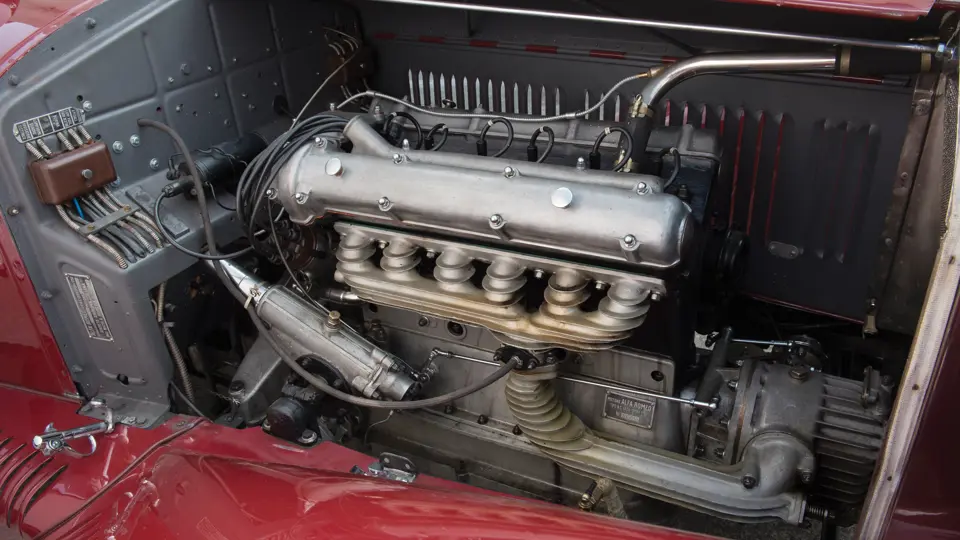


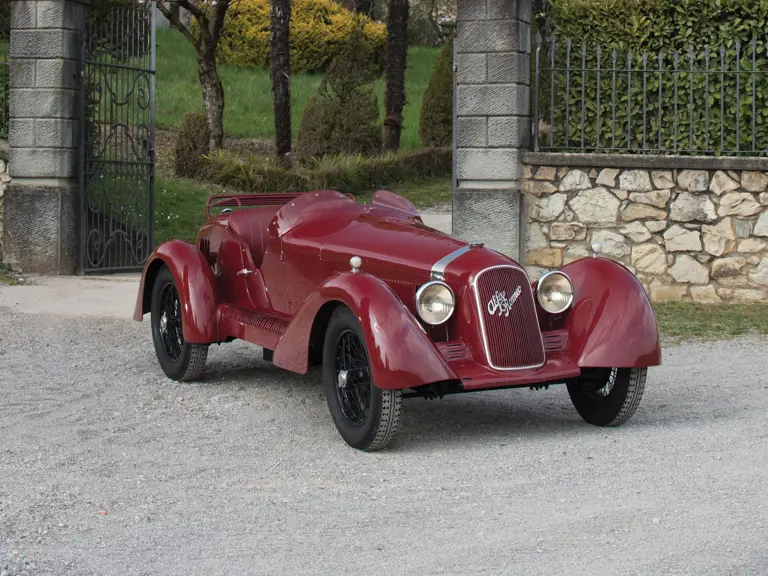

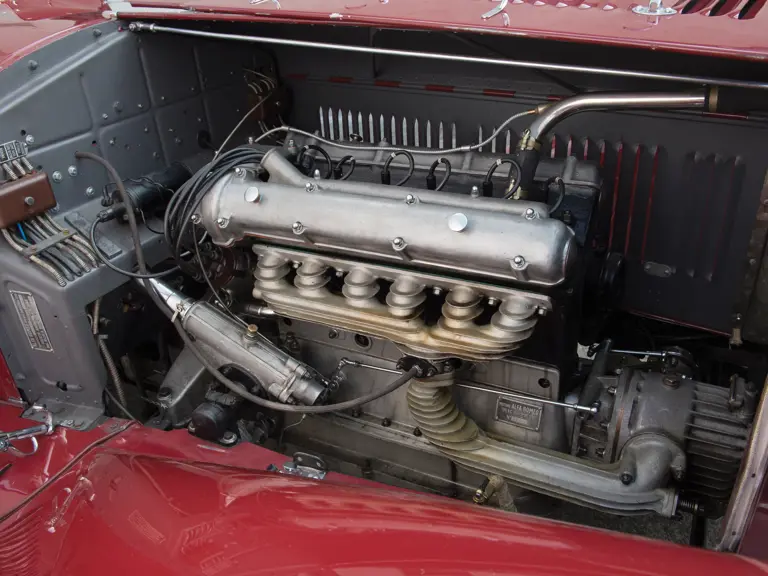
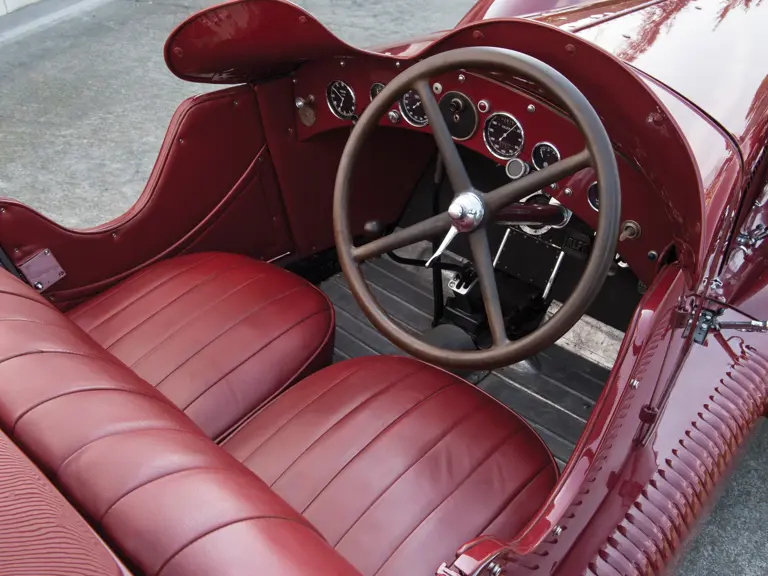
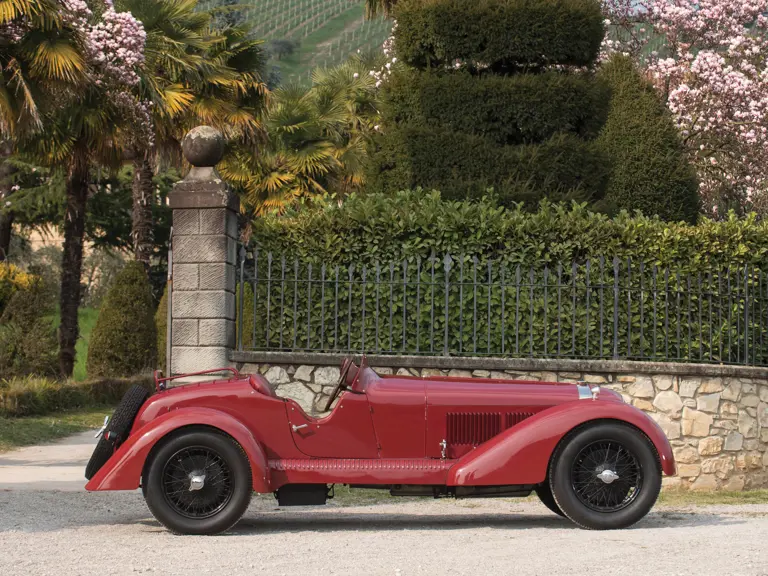



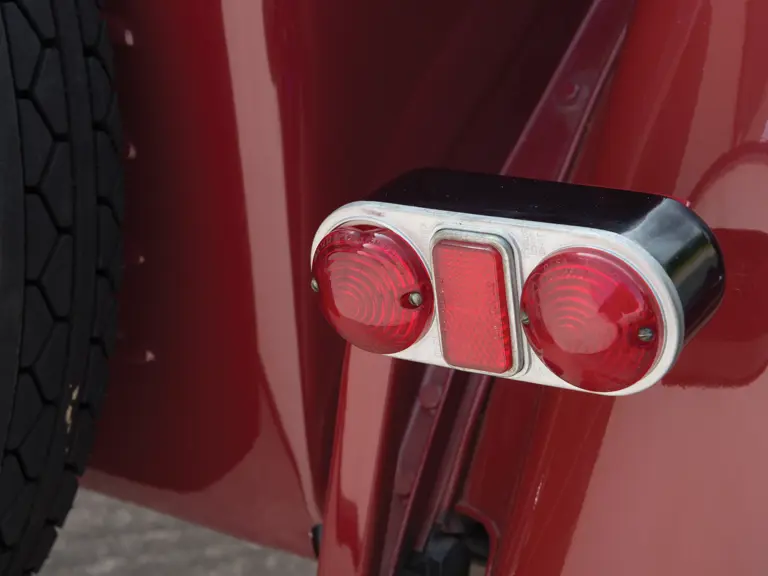
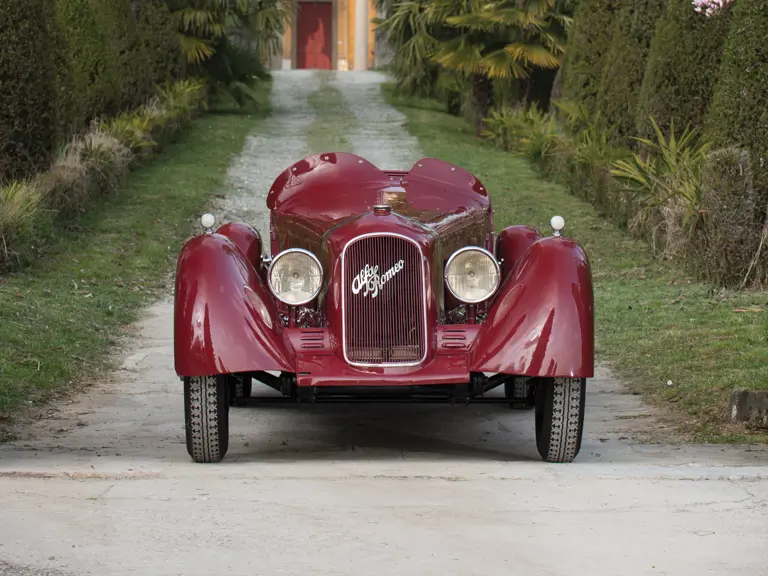
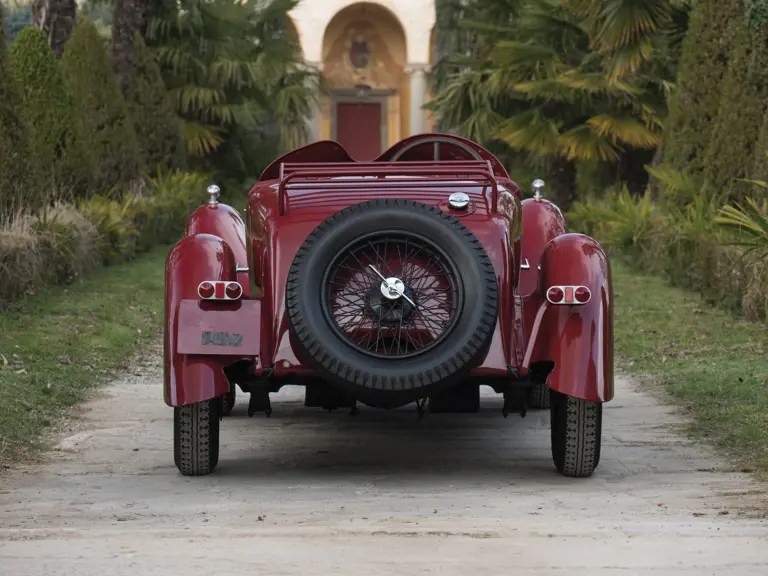
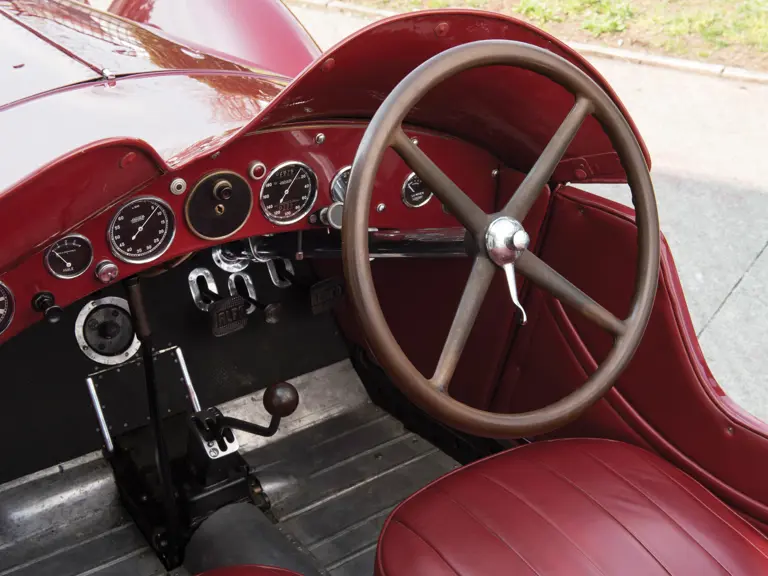
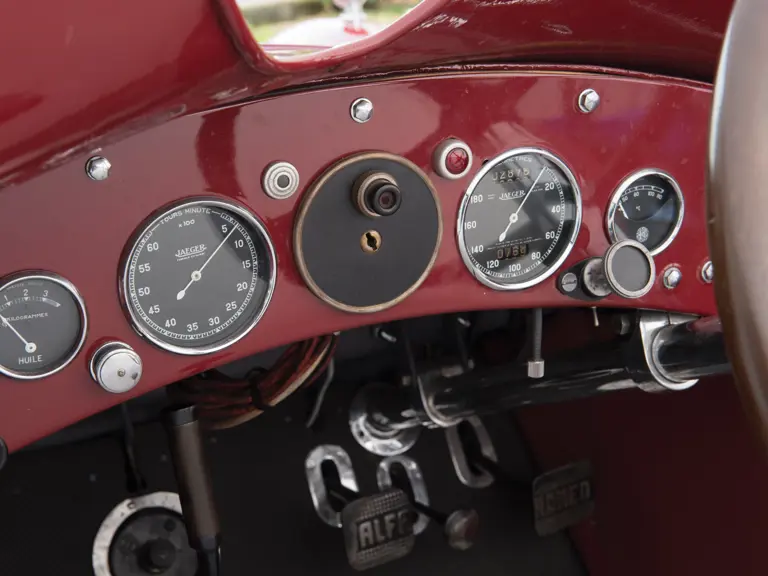

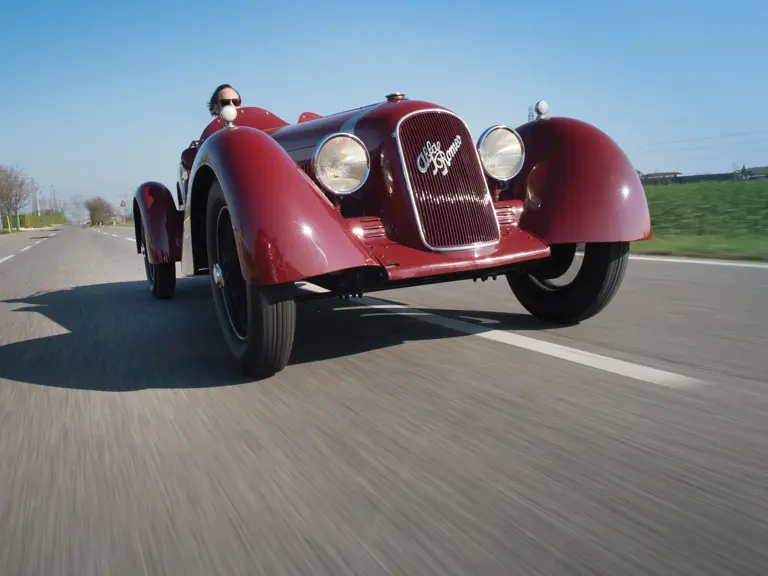
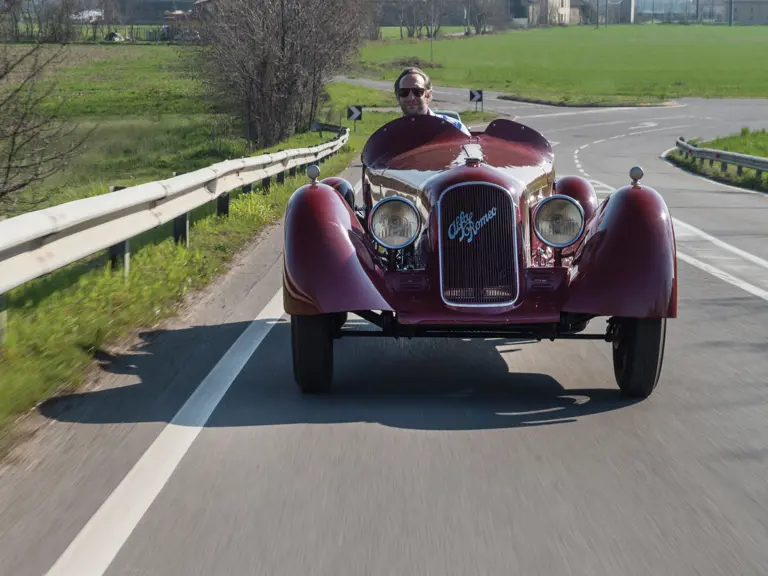
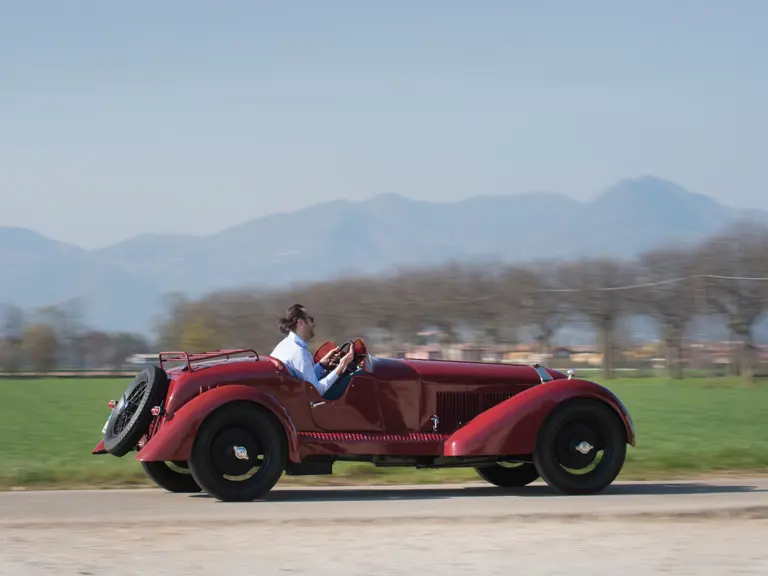
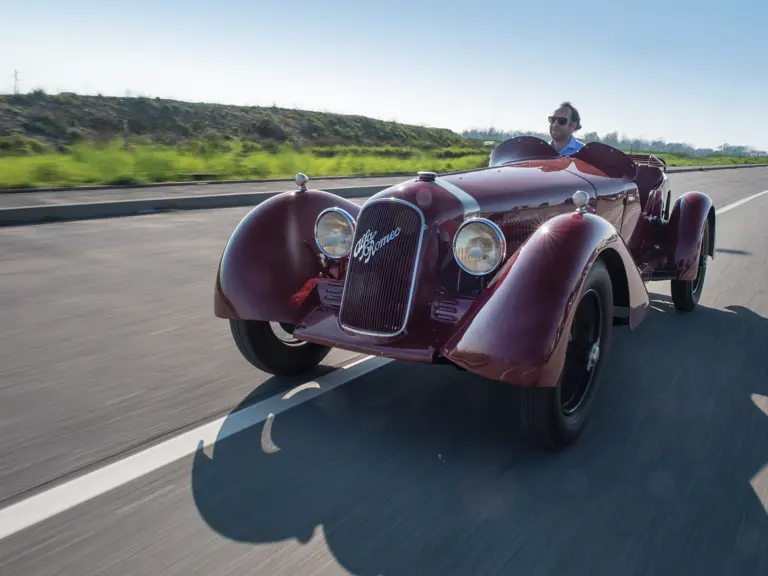
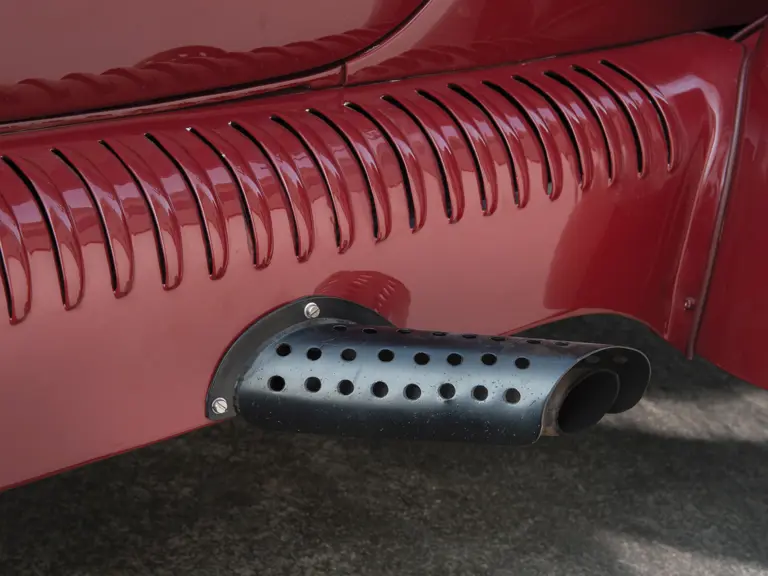
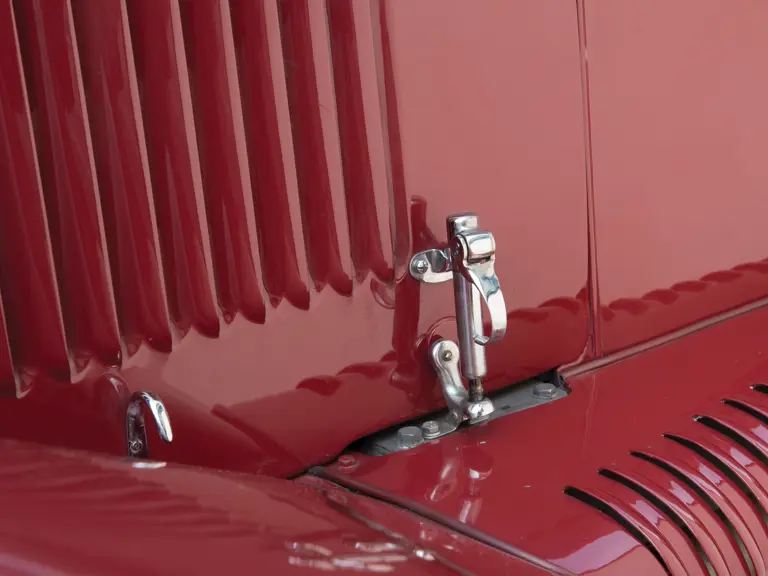


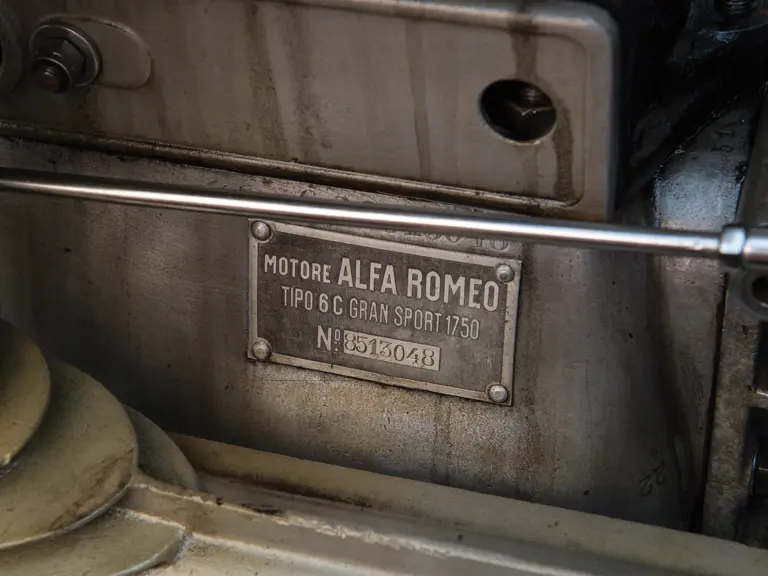
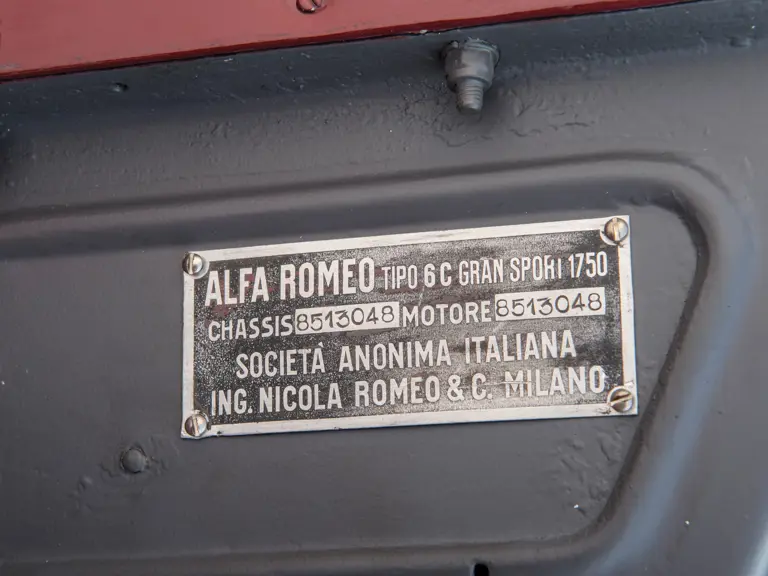

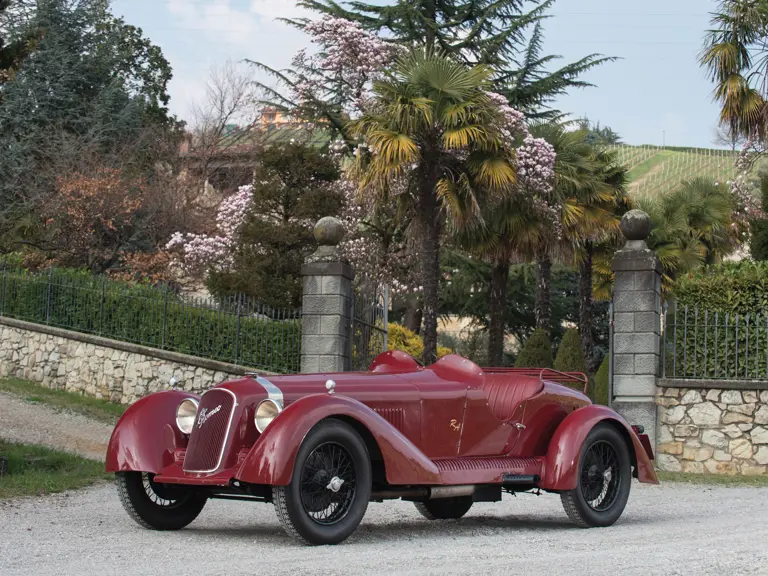
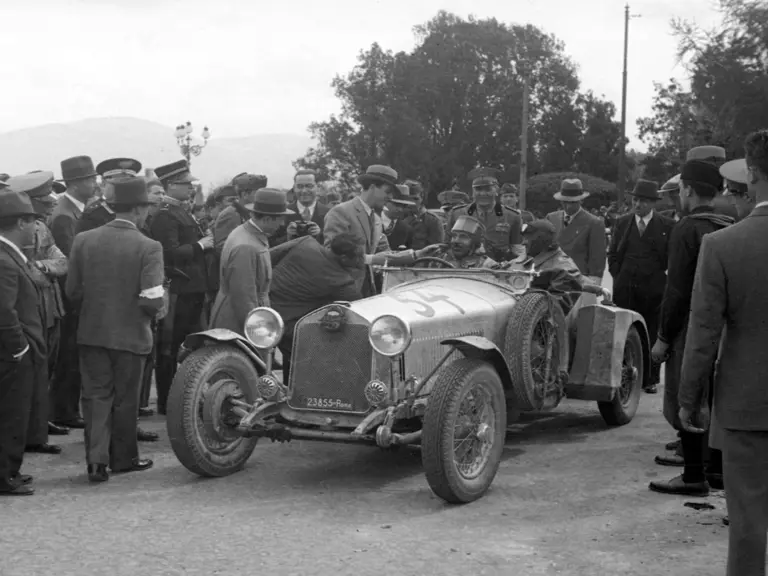
 | Monte Carlo, Monaco
| Monte Carlo, Monaco
